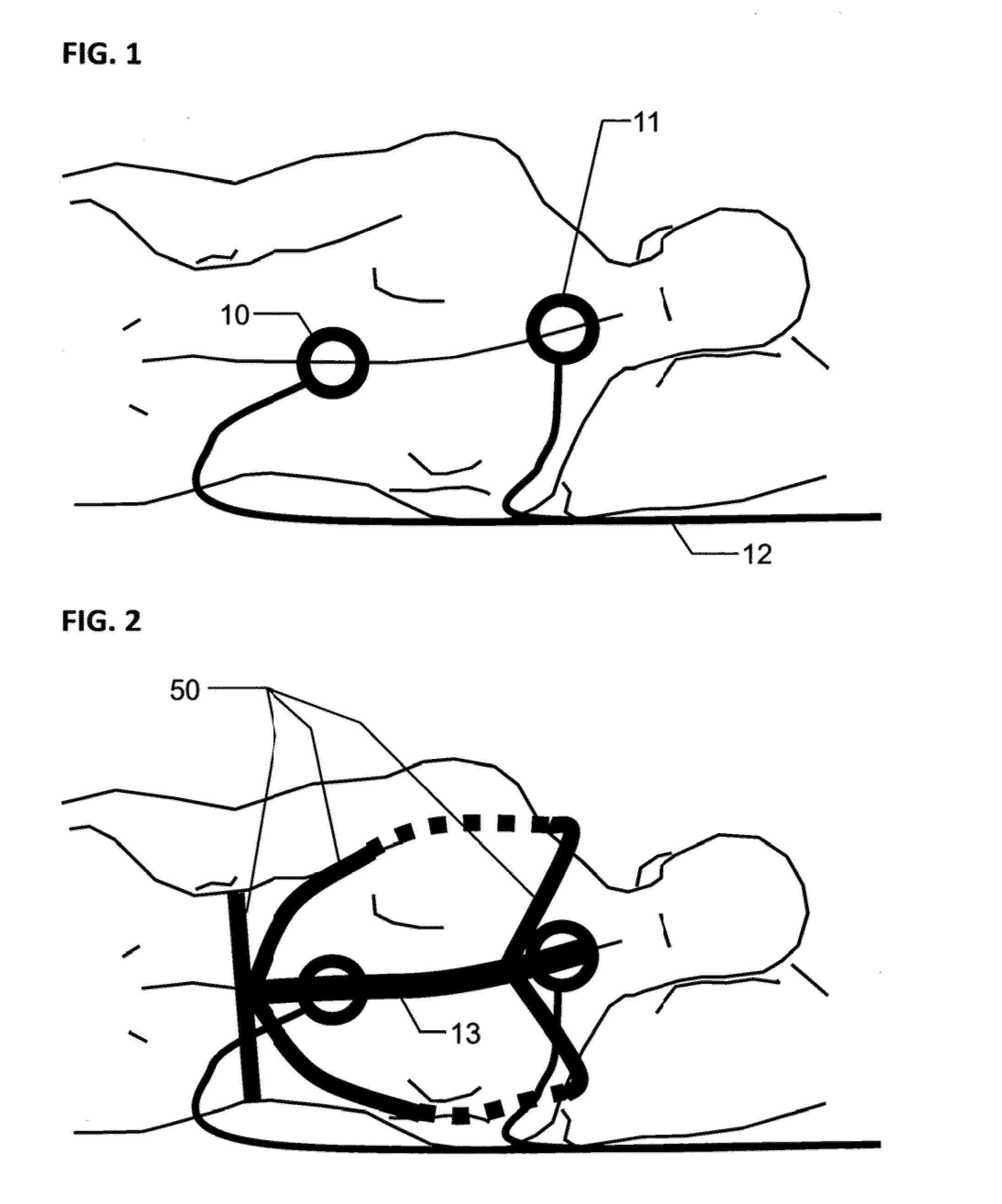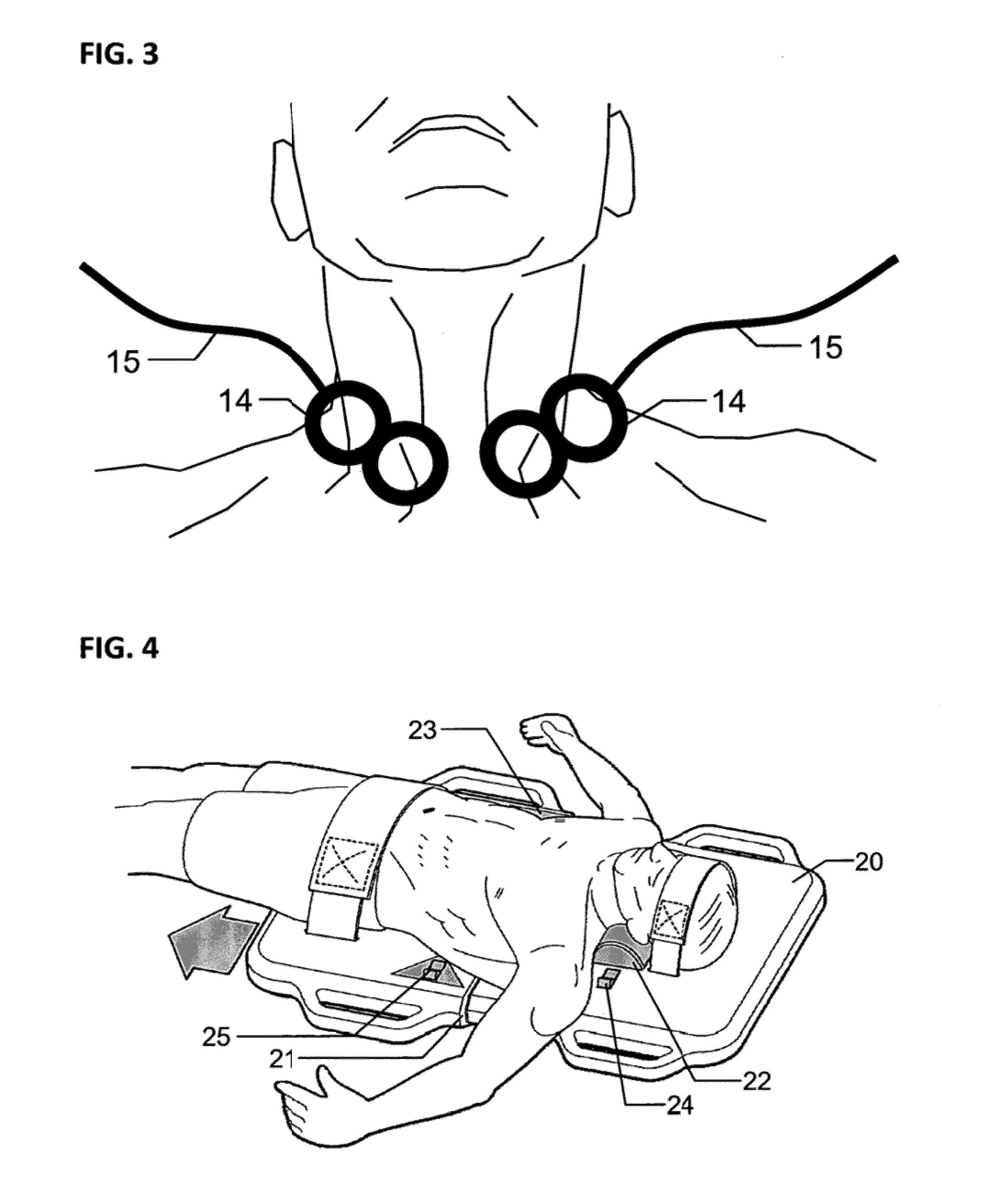Abdominal circulatory pump device
a technology of circulatory pump and abdominal cavity, which is applied in the direction of artificial respiration, massage combs, massage belts, etc., can solve the problems of inadequate blood flow, help to circulate blood, and patient death
- Summary
- Abstract
- Description
- Claims
- Application Information
AI Technical Summary
Problems solved by technology
Method used
Image
Examples
Embodiment Construction
[0042]The abdominal circulatory pump uses expulsive manoeuvres performed by contraction of the diaphragm while stabilizing, contracting or compressing the abdominal wall to increase abdominal pressure and pump blood. At the same time, it can be used to lower pleural pressure around the surface of the lung to provide ventilation. In humans the blood in the splanchnic circulation; i.e., the blood in the abdominal contents, is a reservoir of about 20% to 25% of the whole body blood volume, or approximately 1.0-1.2 litres. The increase in abdominal pressure forces this blood to flow out of the abdomen and through the body. Measurements with voluntary expulsive manoeuvres in normal subjects show that it can pump between five and eight litres per minute of blood. This improvement in blood flow over other CPR or heart assist devices (a five-fold or more increase over chest compressions) is significant because brain and other tissues rapidly begin to die when not properly perfused with oxyg...
PUM
 Login to View More
Login to View More Abstract
Description
Claims
Application Information
 Login to View More
Login to View More - R&D
- Intellectual Property
- Life Sciences
- Materials
- Tech Scout
- Unparalleled Data Quality
- Higher Quality Content
- 60% Fewer Hallucinations
Browse by: Latest US Patents, China's latest patents, Technical Efficacy Thesaurus, Application Domain, Technology Topic, Popular Technical Reports.
© 2025 PatSnap. All rights reserved.Legal|Privacy policy|Modern Slavery Act Transparency Statement|Sitemap|About US| Contact US: help@patsnap.com



